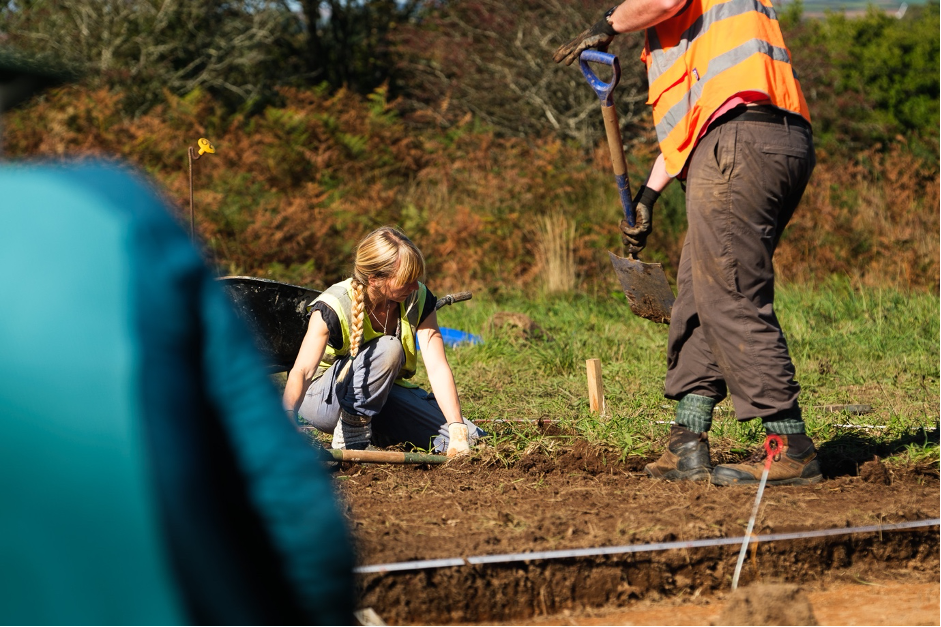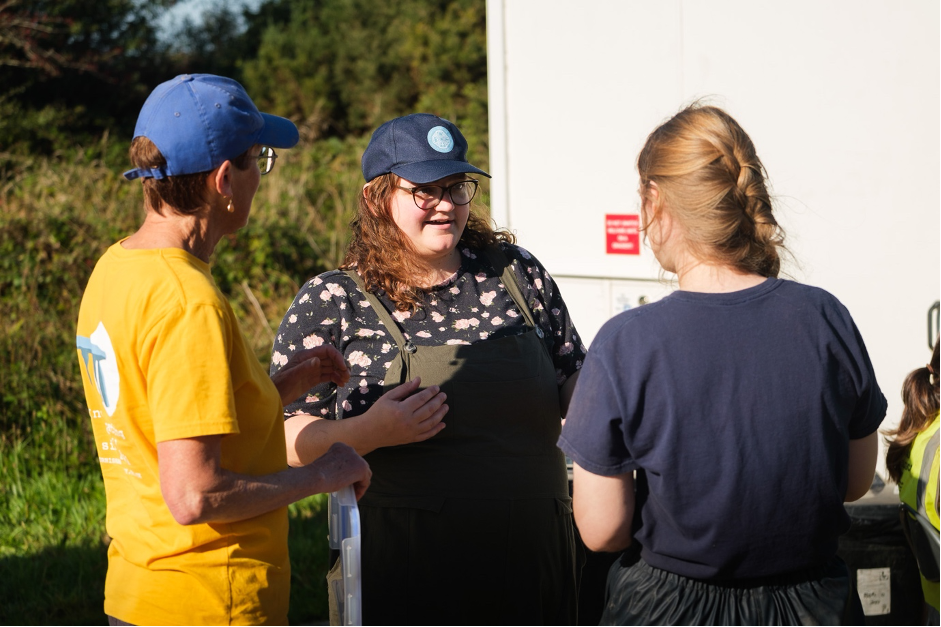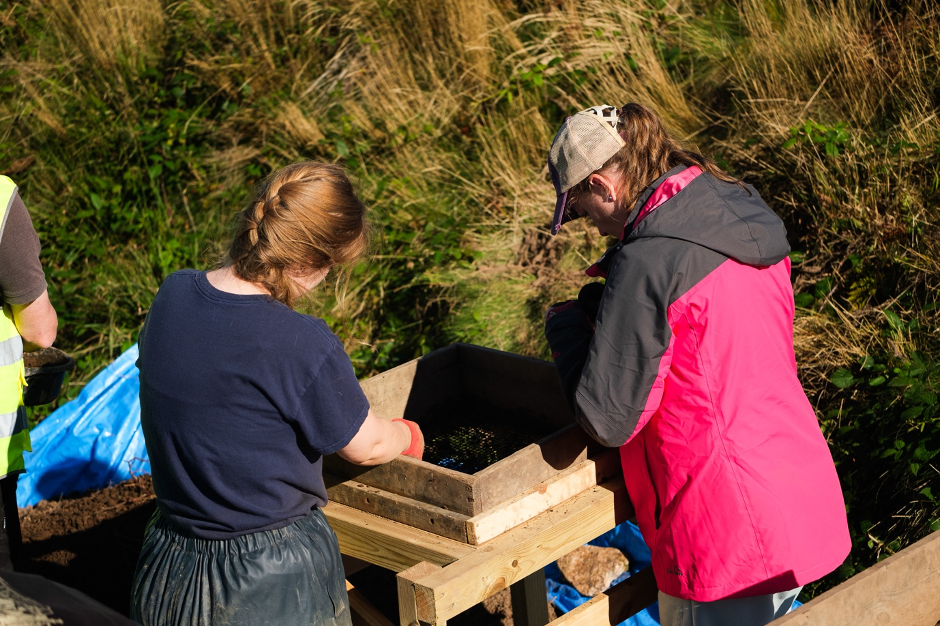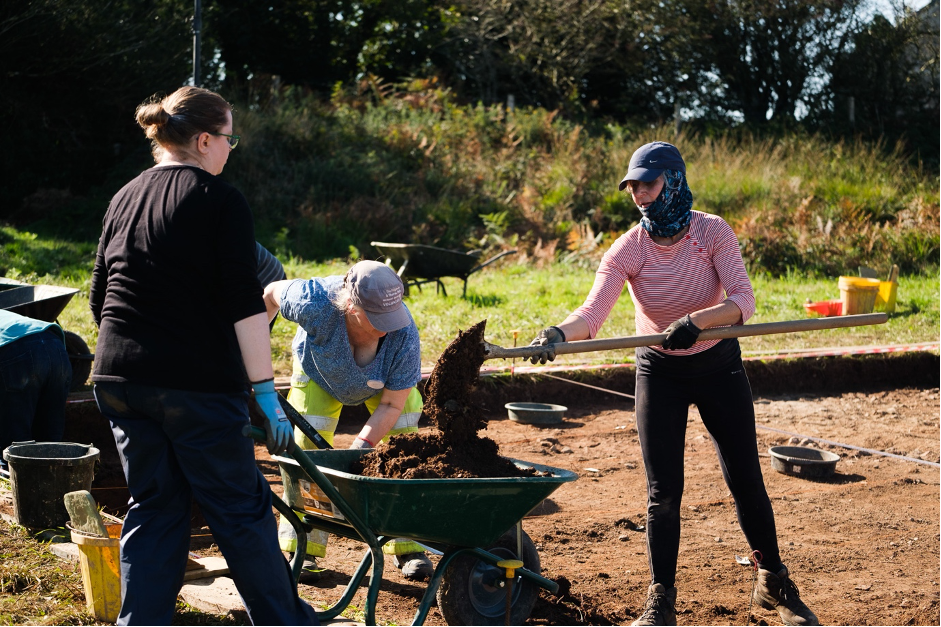
Click here for the original blog post on the Cornwall Heritage Trust website.
The landscape of the site has changed dramatically, too. The central trench is now almost fully levelled off at subsoil level, and the trench over the rampart has been extended towards the centre, following the pattern of Charles Thomas’ original 1962 excavation. With the deadline no longer a distant goal but very much on the horizon, there’s a growing sense of urgency. Plans are being drawn up based on what has already been uncovered, and strategies are forming about where to dig next.

One of the exciting things about this collaborative project is the community of excavation, where everyone is included. Cornwall Heritage Trust has been running a community engagement programme alongside Historic England’s dig. In just the past week, over 130 schoolchildren and a number of community and social prescribing groups have visited the site, learning about the importance of historic places across Cornwall, how we record and care for them, and how archaeology helps us understand their stories. Under the guidance of our Education and Outreach Manager, Caroline Davey, and our Engagement Manager, Sophie Meyer, these visitors have had the chance to get hands-on with the work going on at Castilly.
The engagement work isn’t a separate project; it’s an extension of the excavation itself, designed to bring the dig into the heart of local communities. The excavation and engagement are two threads woven into a single narrative.

Ann Preston-Jones of Cornwall Archaeological Society (CAS) and a Trustee of Cornwall Heritage Trust, spoke about the value of bringing local people onto the site through workshops and educational visits. She pointed out that this kind of involvement helps prevent ancient places like Castilly from becoming ‘sterilised’, disconnected from the people around them. By encouraging personal connection and understanding, people can feel invested in Cornwall’s historic places and landscape and more likely to stand up for them in the future.
For many, it can feel hard to access the past through the places around us. So many important sites are either in poor condition or feel out of reach, wrapped up in academic language and expectations. But they offer one of the best ways for people to learn about the past and to feel a connection to it that’s real and lasting.

And the benefits don’t just go one way. Engagement work like this strengthens connections between people and place. A 2015 study shared by the National Academy for Social Prescribing estimated that visiting heritage sites saved the NHS over £193 million in reduced GP and psychotherapy appointments. The mental and physical health benefits of historic places are well documented—and the next few weeks offer a brilliant opportunity for people to experience them first-hand.
Back in the trenches, the dig has moved on quickly over the past week and seems to have reached a turning point. A level subsoil layer has been reached, scattered in places with stone, and it feels like a blank canvas. It’s a tantalising thought that the anomalies from the geophysical survey could be lying just below the surface.
The focus now shifts to investigating those deeper layers and continuing to welcome more visitors to experience the excavation first-hand. As the dig progresses, and more of Castilly’s story is revealed, next week’s update will explore how both the archaeology and the engagement are continuing to shape our understanding of this unique Cornish henge.

